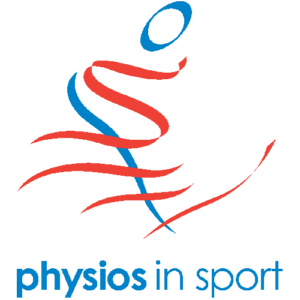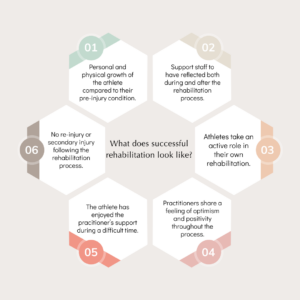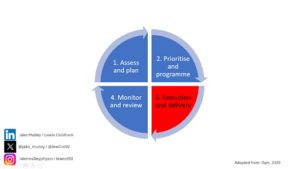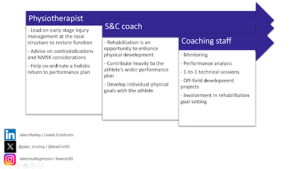A collaborative rehabilitation framework involving the dual-discipline support of physiotherapy and strength & conditioning (S&C). To assist the athlete in their journey from injury to performance.
Keywords: Multi-disciplinary team working, athlete rehabilitation management, rehabilitation programme delivery

Introduction:
Part three of this blog series builds on the work of part 1 and part 2. These blogs explored how the working relationship between a strength and conditioning (S&C) coach and physiotherapist can assist the athlete during injury and rehabilitation. Part one and part two also summarised how this relationship is significant in assessing an injury and planning, prioritising and programming the rehabilitation to guide the athlete to a return to performance. The rehabilitation process is an opportunity that leads to personal and physical growth for the athlete involved. Previous blogs also considered how the S&C coach and physiotherapist relationship can facilitate the areas that make the rehabilitation process a successful one for all key stakeholders involved.

Figure 1: Key themes of a successful rehabilitation
Part 3 will explore the execution and delivery aspect of the rehabilitation process. Specifically the individual, shared and overlapping roles of both the physiotherapist and S&C coach in delivering the different stages of the rehabilitation programme (Figure 2).

Figure 2: Execution and delivery (Dyer, C., 2020)
Execution and delivery:
The delivery of a rehabilitation programme requires close inter-disciplinary working. Each discipline (e.g. physiotherapy, S&C, nutrition, sports medicine, sports psychology etc) will have a greater level of input at varying stages of the process, but will all be vital in the collective efforts of executing and delivering the programme. Having clarity on the key roles and responsibilities of each discipline in the inter-disciplinary team assists in cohesive delivery of the programme. In particular the physiotherapist and S&C coach relationship. These roles and some of the responsibilities are highlighted in Figure 3.

Figure 3: Individual practitioner responsibilities
Everyone has a part to play:
A practitioners’ level of input may differ during the stage of rehabilitation (Figure 4).

Figure 4: Rehabilitation stages pyramid
Whilst an athlete is going through the ‘protection and preservation’ phase of an injury, the physiotherapist and S&C coach will have more involvement than the coaching staff. Whereas during the ‘enhancement ’and ‘performance’ phases of the rehabilitation, coaching staff will take on a much greater role than before. Figure 5 demonstrates how the level of input differs across the rehabilitation programme.

Figure 5: Practitioner input at each rehabilitation stage
It is imperative, however, that at each phase of the rehabilitation process all stakeholders monitor and review progress. Not just at the time of planned return to performance. Smaller, regular meetings between the physiotherapist and S&C coach both with and without the athlete are needed, hence establishing a collaborative and effective working relationship between the two practitioners is important, to facilitate an athlete’s rehabilitation.
Conclusion:
- Collaborating and best utilising the collective skillsets of the wider athlete support team is required to assist in the holistic delivery of all aspects of the athlete’s return to performance programme.
- The level of individual input of physiotherapists and S&C practitioners varies throughout the course of the rehabilitation process but still requires a close and effective working relationship at all stages for effective athlete injury management.
Acknowledgements:
Thank you to the ACPSEM (@physiosinsport) in supporting this blog.
Competing Interests – None
Jake Mulley BSc (Hons), MCSP, ACPSEM Bronze Accreditation. Senior Physiotherapist and educator working in private practice. LinkedIn: Jake Mulley, Instagram: jakemulleyphysio, X: @jake_mulley
Lewis Coldham BSc (Hons). Strength and Rehabilitation Coach and Educator. LinkedIn: Lew Coldham, Instagram: lewcol92, X: @lewCol92
References:
- Dyer, C., 2020. Groin Pain in an International Rugby Sevens Athlete